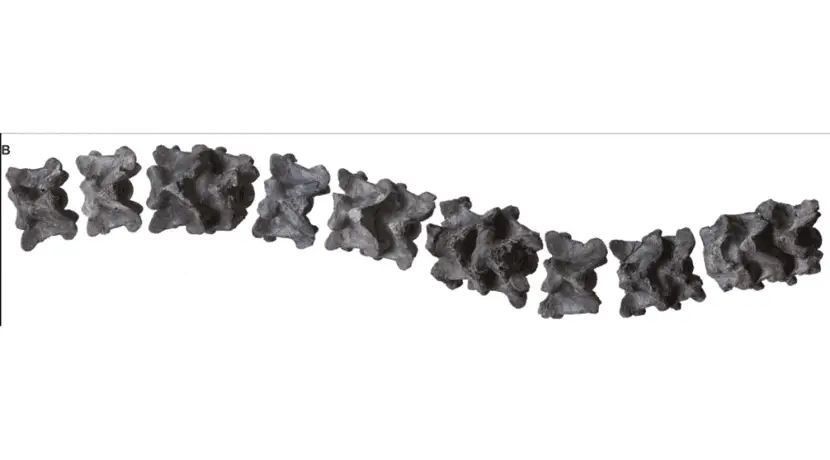Prehistoric snake was bigger than a T-Rex
Vasuki Index April 21, 2024 10:26 p.m. Robert Klatt A fossil of a gigantic ancient snake has been discovered in India. Based on the bones, the snake was larger than a T-Rex and likely fed on crocodiles. Roorkee (Si). Researchers from the Indian Institute of technology Roorkee (IIT Roorkee) have discovered the fossils of an […]

Vasuki Index
Robert Klatt
A fossil of a gigantic ancient snake has been discovered in India. Based on the bones, the snake was larger than a T-Rex and likely fed on crocodiles.
Roorkee (Si). Researchers from the Indian Institute of technology Roorkee (IIT Roorkee) have discovered the fossils of an ancient giant snake in a lignite mine in India. According to the publication in the specialist magazine Scientific reports 27 vertebrae of the snake were found, some of which are still in the same position as the snake when it was alive. The skull bone of the snake, which researchers say closely resembled a python, has not yet been discovered.
According to the discovered bones, the prehistoric snake Vasuki indicus was around fifteen meters long and was therefore significantly larger than the Asian reticulated python, which, with a length of up to ten meters, is the largest living snake species on earth . Vasuki indicus also surpassed the Tyrannosaurus rex (T. rex) with its enormous length.
However, the Vasuki indicus does not come close to the largest Titanoboa, the largest species of snake discovered to date. Titanoboa lived in what is now Colombia and reached a length of up to 13 meters around 60 million years ago, according to Sunil Bajpai.
“Vasuki’s estimated body length is comparable to Titanoboa, although Titanoboa’s vertebrae are slightly larger than Vasuki’s. However, at present we cannot say whether Vasuki was more massive or thinner than Titanoboa.
Vasuki indicus lived 47 million years ago
The prehistoric snake lived in the swamp forests of what is now western India around 47 million years ago, i.e. during the Cenozoic era. Based on her bones, she weighed up to 1,000 kilograms. As study leader Debajit Datta explains, the enormous size also had drawbacks.
“Given its size, Vasuki was a slow-moving predator that used constriction to overwhelm its prey during an ambush.”
Based on the fossils, it is not possible to clearly answer what prey Vasuki indicus ate. Other fossils from its habitat suggest that catfish, turtles and crocodiles may have featured in the prehistoric snake’s diet.
Scientific Reports, doi: 10.1038/s41598-024-58377-0













